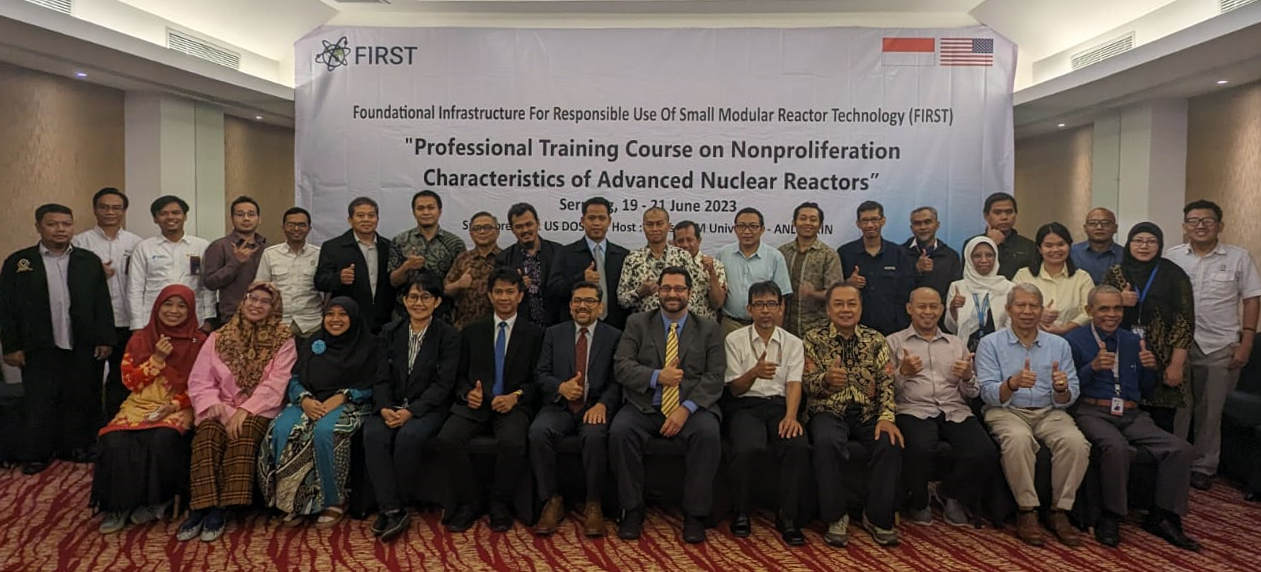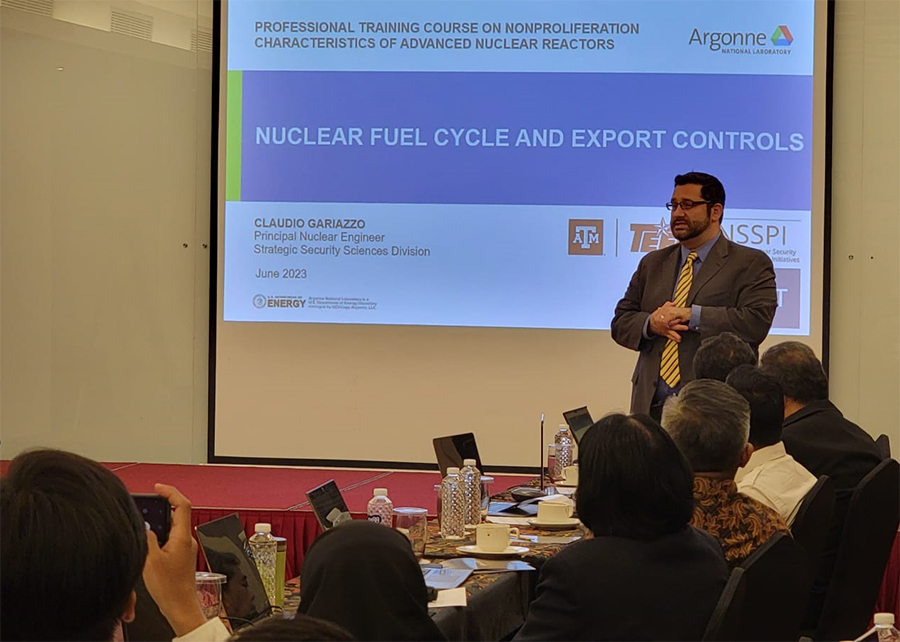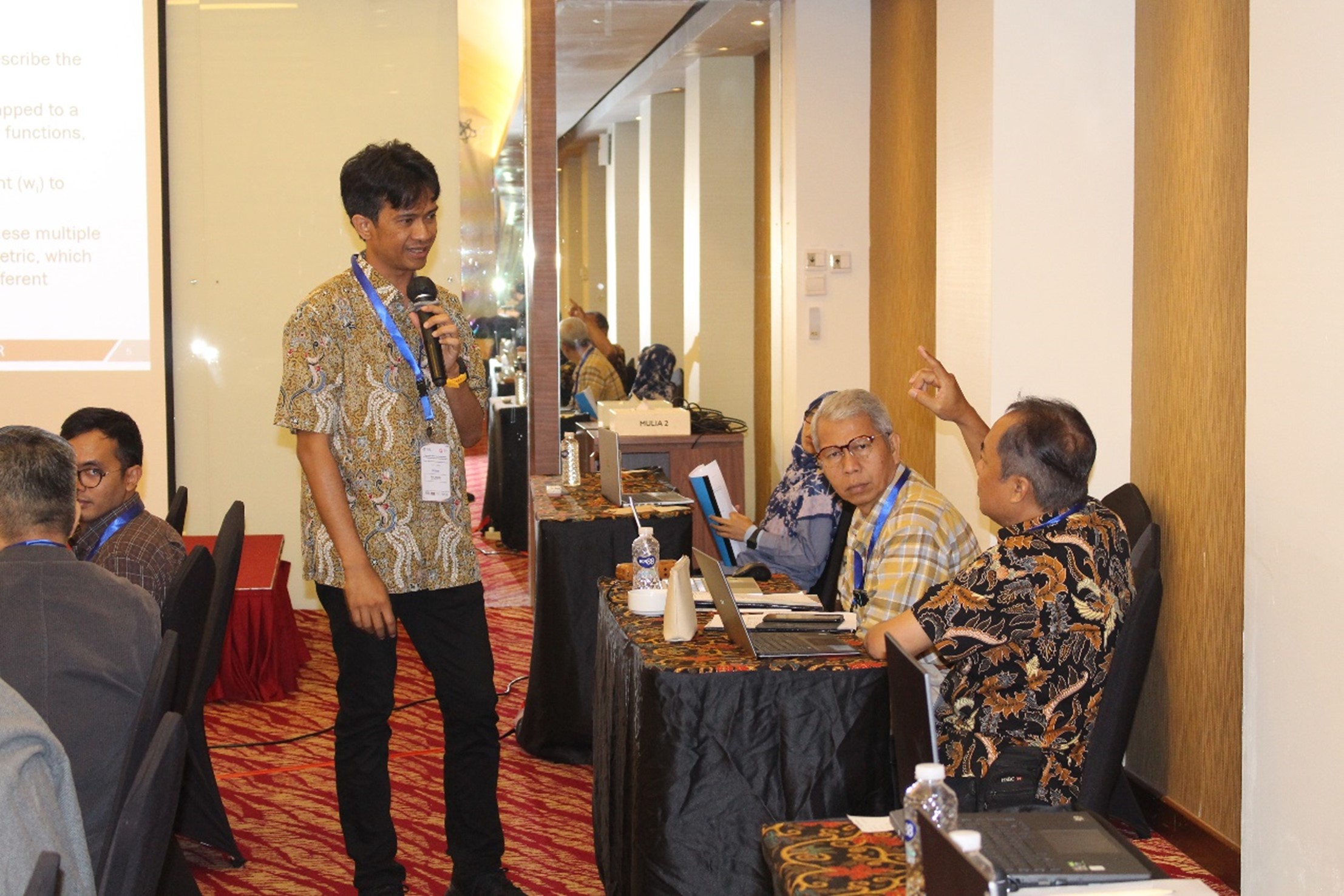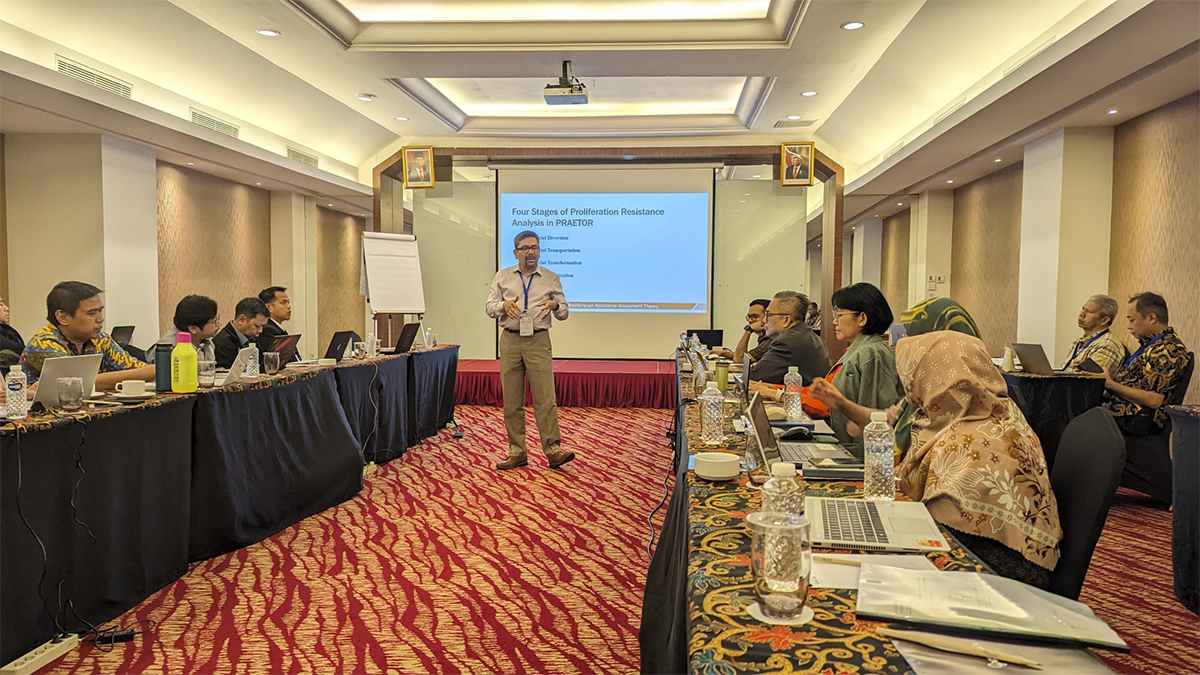
In June, the Center for Nuclear Security Science and Policy Initiatives (NSSPI), Argonne National Laboratory (ANL), and Badan Riset dan Inovasi Nasional (BRIN), the Indonesian National Research and Innovation Agency, jointly conducted a professional training course titled “Non-proliferation Characteristics of Advanced Nuclear Reactors” in Jakarta, Indonesia. The course was intended to help the Indonesian civil nuclear energy sector make informed and responsible decisions regarding civil nuclear reactor technology selections by considering the nuclear nonproliferation characteristics, including nuclear security. The course also presented methodologies to quantify the proliferation resistance of various nuclear technologies. It was funded as part of the US Department of State’s Foundational Infrastructure for Responsible Use of Small Modular Reactor Technology (FIRST) program, which aims at providing “capacity-building support to partner countries as they develop their nuclear energy programs to support clean energy goals under the highest international standards for nuclear safety, security, and nonproliferation.”

The 34 participants in the training course included staff members from BRIN, the Indonesian Nuclear Energy Regulatory Agency Badan Pengawas Tenaga Nuklir (BAPETEN), private utility companies, and academics from Indonesian universities. The course was taught by subject matter experts NSSPI Director Dr. Sunil Chirayath, NSSPI Senior Research Engineer Dr. Dany Mulyana, and Dr. Claudio Gariazzo of Argonne National Laboratory. BRIN personnel contributed to the course by giving presentations on the state of the present Indonesian nuclear energy program and the nuclear security and nonproliferation programs in the country. In addition to general lectures on nuclear security topics, the US SMEs introduced the proliferation resistance assessment research being conducted at Texas A&M University and the PRAETOR code that was developed as part of that research to evaluate the proliferation resistance of nuclear technologies. They also presented proliferation resistance case studies to allow the participants to apply what they had learned.

According to one participant, “This training course helped me understand why we should be aware of safety, security, and safeguards while selecting nuclear technology for Indonesia.” Another added that it “provided a great opportunity to understand nuclear proliferation resistance and apply a proliferation resistance code in analyzing the Indonesia research reactor” and would be “useful in analyzing the other two Indonesian research reactors.” A third participant noted that the PRAETOR code would be “very valuable in supporting policy decisions on nuclear energy technologies.”
